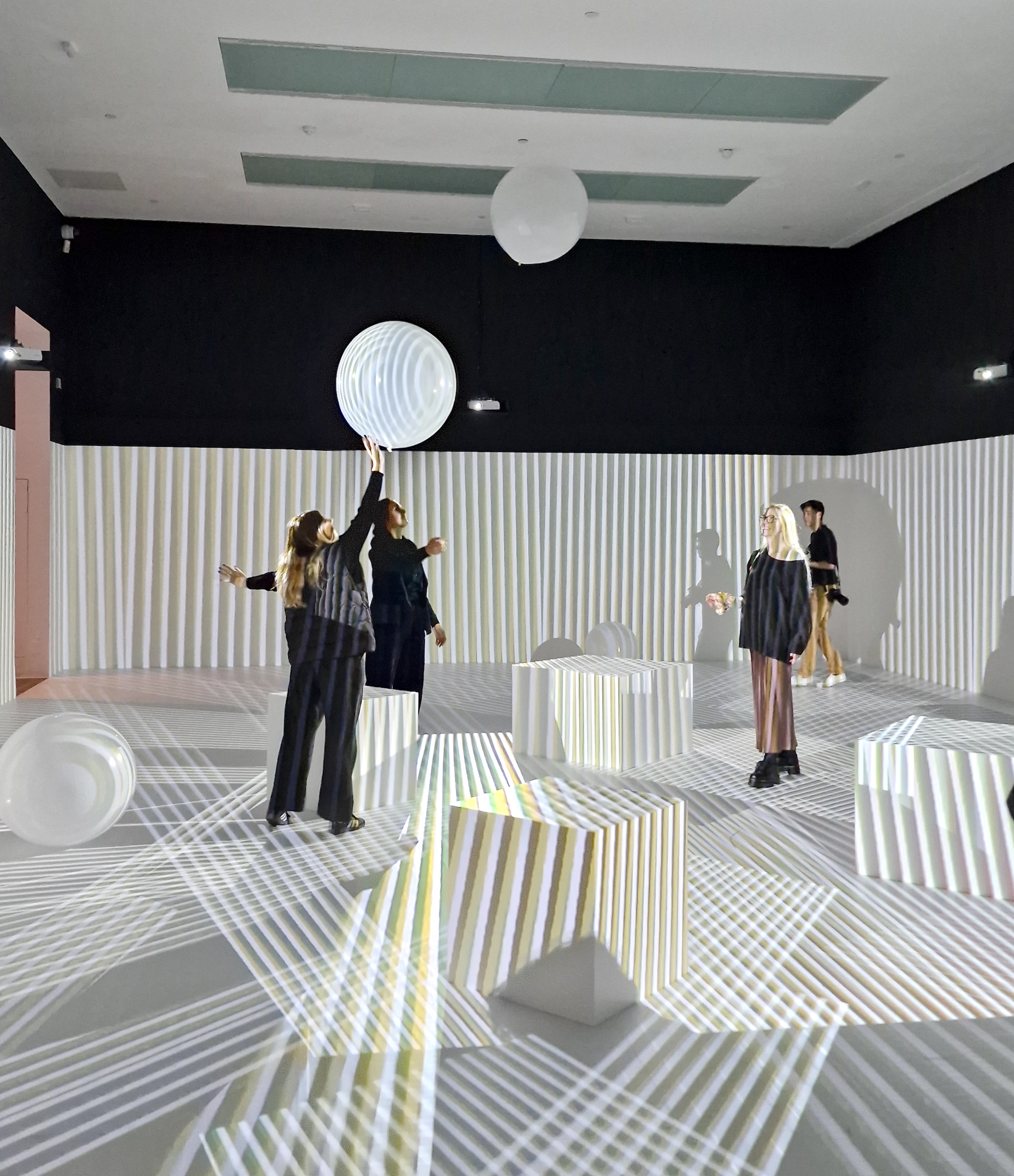LONDON — In early November 2024, an artwork depicting Alan Turing created by an AI robot sold for $1 million at auction. It was a watershed moment in the history not just of computing and artificial intelligence, but also its connection with art. For Electric Dreams: Art and Technology Before the Internet at Tate Modern, curators Val Ravaglia, Odessa Warren, and Kira Wainstein return to this relationship in its infancy. The show spans the 1950s through the ’90s — “before the internet” is its crucial end point, i.e., before computing expanded from the physical into the digital realm of telecommunications, or the ether. The artists and exhibits on view explore the use of then newly developing technologies in the most fundamental creation of mark-making, or provoking sensory effects in the body when combined with light and sound, through to early forms of communication. It is thoroughly grounded in the real, tangible, and charmingly analogue.
As technology evolved exponentially during this period on a global scale, and in myriad means and forms, the curators wisely stick to a roughly chronological arrangement, exploring “artists’ shared interests and collaborations.” The selection is intended as a sample, for a comprehensive and definitive overview of the work being created at this time is surely impossible; even a wall map outlining the exhibition’s themed rooms — such as Materialising the Invisible or Dialogue with the Machines — and shared connections between these and artists and movements, is so dizzyingly tangled that it is barely legible.
Helpfully, introductory wall captions include a handful of glossary terms relevant to each room, which double as introductory themes and concepts. Under the heading “Cybernetics,” for example, are the terms “Binary Code,” “Matrix,” and “Plotter,” the last defined as, “Drawing machine that interprets computer commands to draw lines on paper using automated pens or pencils.” Nearby is a reproduction of a 1968 photograph on a plotter that has been programmed by mathematician and co-founder of cybernetics H. Philip Peterson to scan the original and map out in pixels using numbers according to tonal gradient. Next to it is an example of a “drawing” from 1965 made by one of Swiss artist Jean Tinguely’s “Métamatics” — machines that generated artworks — a cluster of stabbed, colored marks. Such joining of disparate artists and methods under shared themes characterizes much of the show.
A perhaps surprising counterpart to the focus on machines in making art is the art’s sensory effects on the brain. Writer William S. Burroughs is probably the last name you would expect to see in an exhibition on digital technology, yet here he is in collaboration with poet and performance artist Brion Gysin, who created a spinning zoetrope-like light sculpture meant to be experienced through closed eyelids, apparently intended to trigger alpha waves in the brain. Visitors are encouraged to sit and experience this 1959 “Dreammachine” (Burroughs-inspired drug reveries optional). Elsewhere are other kinetic optics pieces playing with visual perception, including Grazia Varisco’s “Variable Light Scheme R. VOD. LAB” (1964) and Marina Appolonio’s “Circular Dynamics 6S+S” (c. 1968–70), spinning, mind-melting circles of light and geometric pattern, respectively.

Providing effective punctuation to the extensive and extensively entangled survey are several rooms containing a single work by one artist. Most popular will likely be Carlos Cruz-Diez’s immersive installation “Chromointerferent Environment,” originally created in 1974, which projects moving parallel bands of light across the walls and ceiling, while visitors can photograph themselves for the socials throwing giant balloons around. (My sympathies to the room stewards, as at least three balloons popped loudly during the 10 minutes this reviewer spent in the vicinity.) More thoughtful, though perhaps less Instagrammable, is Tatsuo Miyajima’s Buddhism-inspired series 133651, arrangements of LED numbers of differing sequences and speeds, reflecting through digital imagery his thoughts on life cycles, change, and the passage of time.
It is safe to say that the average viewer’s level of internet savvy may render such early forays into technologically assisted art archaic, even crude. Such examples as Greek artist Takis’s 1960s sculptures, which use electromagnetics to create simplistic music may feel underwhelming to a generation for which the seemingly infinite possibilities of digital sound is a given. Yet it is important to recognize that these global efforts to embrace tech advancement occurred as a natural progression; one need only look at the many iterations of the iPhone to understand obsolescence in the quest for improvement. Instead, what is overwhelmingly affecting is the sheer extent to which human imagination and inventiveness harnessed and exploited technological progressions throughout this period, in so many innovative forms. Does a robot AI-produced portrait of Alan Turing therefore symbolize its inevitable demise? Perhaps it remains that human insight and invention are the crucial ingredients in making art.





Electric Dreams: Art and Technology Before the Internet continues at Tate Modern, (Bankside, London, England) through June 1, 2025. The exhibition was curated by Val Ravaglia, Odessa Warren, and Kira Wainstein.

